By James Ferguson
The comic then jumps to the story featuring a group of co-eds going on the worst beach vacation ever. Things get a little confusing as one of the girls bears a striking resemblance to Sela. Is she in the story? Is this just something else? Anyway, this Dark Shaman shows up and basically wants to kill people. That's really what's going on. The book is set up like a generic slasher movie with a group of stereotypical twenty-somethings that are meant to be cannon fodder for the villain.
One of the kids has a tie to the tribe that the Dark Shaman comes from, but it's unclear exactly how they're connected. There's no real reason that this guy is killing people to begin with. I'm sure that innocent blood tastes great, but there are plenty of other options when it comes to a decent meal. Have you tried the Doritos Loco Taco? It's friggin' delicious.
I wish there was more I could say about this Native American murderer, but there's really not much else to go on. He rises from the depths because of some idiots that got too close to a haunted tree. (This marks the third haunted tree I've seen in comics in the past two weeks, by the way. See also Wytches and Sabrina.)
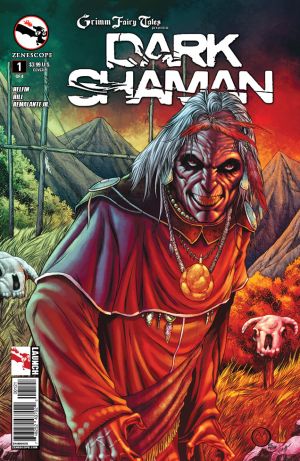
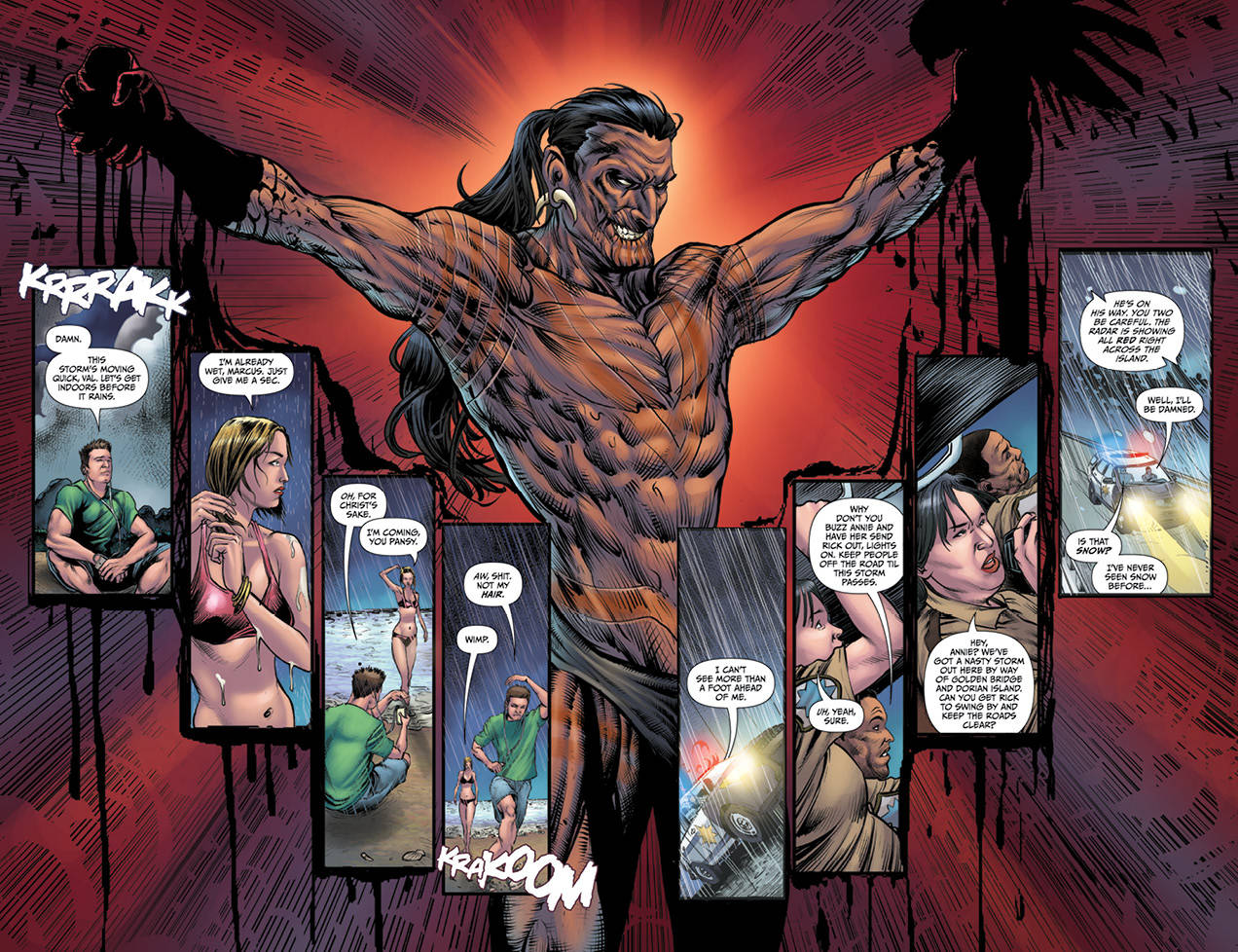
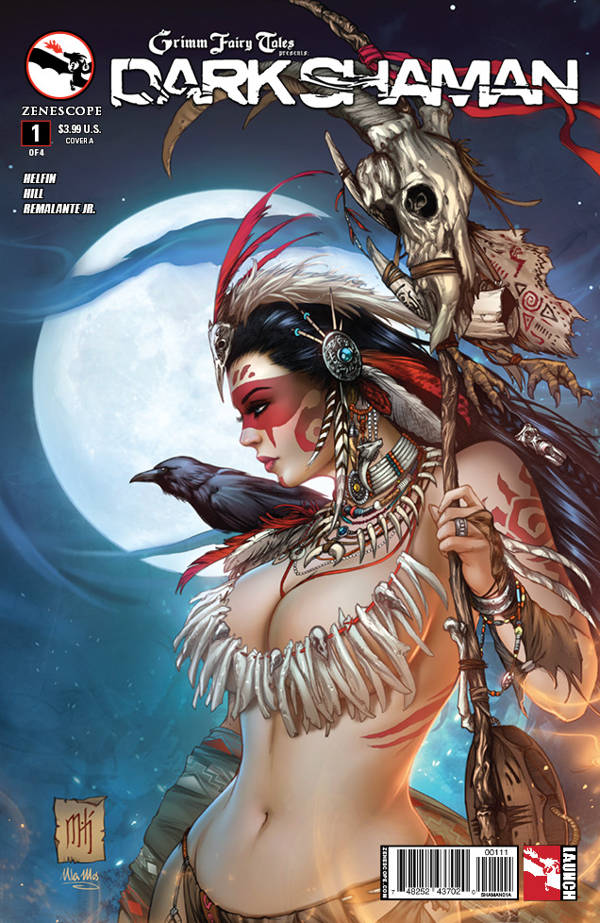
Comment: The Timucua named in the story were a real people who lived in Florida. Some details on them:
Timucua
By 1700, the population of the tribe had been reduced to 1000. Warfare against them by the English colonists and native allies completed their extinction as a tribe soon after the turn of the 19th century.
The Timucua were a semi-agricultural people and ate many foods native to North Central Florida. They planted maize (corn), beans, squash and various vegetables as part of their diet.
Spanish explorers were shocked at the height of the Timucua, who averaged four inches or more above them. Timucuan men wore their hair in a bun on top of their heads, adding to the perception of height.
Each person was extensively tattooed. The tattoos were gained by deeds. Children began to acquire tattoos as they took on more responsibility. The people of higher social class had more elaborate decorations.
Because of Florida’s hot climate, the Timucua wore little clothing. Men dressed only in deerskin breechcloths. Their long black hair was tied in topknots, and their faces and bodies were decorated in brightly colored markings. Some of these tattoos were permanent, while others could be washed away. Women wore skirts of Spanish moss. Their long hair hung loose down their backs. Some women also had tattoos. Both men and women wore bracelets and necklaces of animal bone, teeth, and shell. Colored bird feathers might be placed in their hair during special events. Animal fur capes or robes provided warmth in the winter.
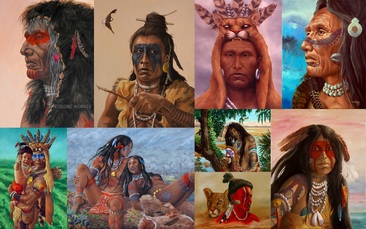
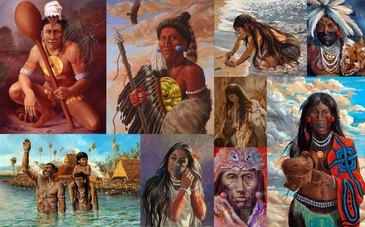
Judging by this review, the comics aren't totally stereotypical. The Timucua were scantily clad with facial markings. They had burial grounds--or at least buried their dead in the ground. There are no Timucua alive today, but other Indians live in the area and may claim descent from them. A few Timucua artifacts may reside in museums.
But that's about it. The "dark shaman" in Satanic robes on the first cover above is false. In fact, most Indian tribes, including the ones in Florida, didn't have shamans. Moreover, shamans aren't some sort of wizard who practices black magic. We don't know much about the Timucua religion, but I doubt it was involved in anything "dark" such as human sacrifice.
So the basic premise of this series is false. It's also stereotypical because it's been done hundreds if not thousands of times. Indeed, a revenge-seeking Indian spirit is the most common Native trope in the horror genre. It's so old and clichéd that it's mind-boggling to see someone using it again. Give it up, copycat creators, and do something original for once.
For more on Indian burial grounds, see Stereotypical Deadskins Video Game.

No comments:
Post a Comment